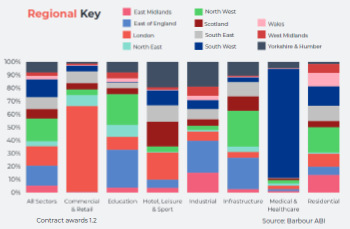Neighbourhood development order
Neighbourhood development orders are defined by the National Planning Policy Framework (NPPF) as orders '... made by a local planning authority (under the Town and Country Planning Act 1990) through which Parish Councils and neighbourhood forums can grant planning permission for a specific development proposal or classes of development.'
The Localism Act, which was introduced in 2011, allows town and parish councils and 'neighbourhood forums’ to have some control over how their neighbourhood develops.
The Act gives neighbourhood forums and town and parish councils two main powers:
- They can create 'neighbourhood development plans’ which establish general planning policies for a neighbourhood.
- They can use 'neighbourhood development orders' to permit certain developments or certain classes of development in a neighbourhood without the need for a planning application.
Neighbourhood development plans and neighbourhood development orders may be linked as part of a coherent strategy that creates an overall plan and then permits specific developments within that plan.
Neighbourhood development orders may not permit, minerals and waste development, types of development that always need an environmental impact assessment, or nationally significant infrastructure projects.
The local planning authority must agree who should be the neighbourhood forum for an area, and once a plan or order has been developed, will verify that the proper consultation has been carried out and that an environmental impact assessment is not required. An independent person then carries out checks to ensure that:
- They are consistent with national planning policy.
- They are consistent with the development plan for the local area.
- They comply with EU and human rights requirements.
- They would not damage local heritage assets.
Neighbourhood development plans or orders can then face a neighbourhood referendum. If there is a majority of support in the referendum, the local planning authority must bring the plans or orders into force.
The Localism Act also allows community organisations to use community right to build orders to allow small-scale development on a specific site. Benefits resulting from such developments stay within the community, and could be used for example to create or maintain local facilities.
Community right to build orders are a type of neighbourhood development order.
Any local community organisation is able to create a community right to build order, provided that the organisation exists to further the economic, environmental and social well-being of the area and that at least half of the organisation’s members live in the area.
As with neighbourhood development orders, community right to build orders are checked by an independent person and are subject to a community referendum.
Community right to build orders are not permitted if the development would need an environmental impact assessment or if they would be on a designated site (such as a site of special scientific interest).
See the article on the Community Right to Build for more information.
[edit] Related articles on Designing Buildings
- Community right to bid.
- Community right to build.
- Development proposal DP.
- Local development order.
- Local resident.
- Localism Act.
- National Planning Policy Framework.
- Neighbourhood planning.
- Planning appeal.
- Planning objection.
- Planning permission.
- Sustainability.
[edit] External references
- Planning Help: Community Right to build orders.
- Planning Help: Neighbourhood development orders.
- Planning Portal: Neighbourhood planning.
- My Community Rights: Understanding the community right to build.
- Communities and Local Government: Neighbourhood planning.
Featured articles and news
Spring Statement 2025 with reactions from industry
Confirming previously announced funding, and welfare changes amid adjusted growth forecast.
Scottish Government responds to Grenfell report
As fund for unsafe cladding assessments is launched.
CLC and BSR process map for HRB approvals
One of the initial outputs of their weekly BSR meetings.
Architects Academy at an insulation manufacturing facility
Programme of technical engagement for aspiring designers.
Building Safety Levy technical consultation response
Details of the planned levy now due in 2026.
Great British Energy install solar on school and NHS sites
200 schools and 200 NHS sites to get solar systems, as first project of the newly formed government initiative.
600 million for 60,000 more skilled construction workers
Announced by Treasury ahead of the Spring Statement.
The restoration of the novelist’s birthplace in Eastwood.
Life Critical Fire Safety External Wall System LCFS EWS
Breaking down what is meant by this now often used term.
PAC report on the Remediation of Dangerous Cladding
Recommendations on workforce, transparency, support, insurance, funding, fraud and mismanagement.
New towns, expanded settlements and housing delivery
Modular inquiry asks if new towns and expanded settlements are an effective means of delivering housing.
Building Engineering Business Survey Q1 2025
Survey shows growth remains flat as skill shortages and volatile pricing persist.
Construction contract awards remain buoyant
Infrastructure up but residential struggles.
Warm Homes Plan and existing energy bill support policies
Breaking down what existing policies are and what they do.
A dynamic brand built for impact stitched into BSRIA’s building fabric.





















